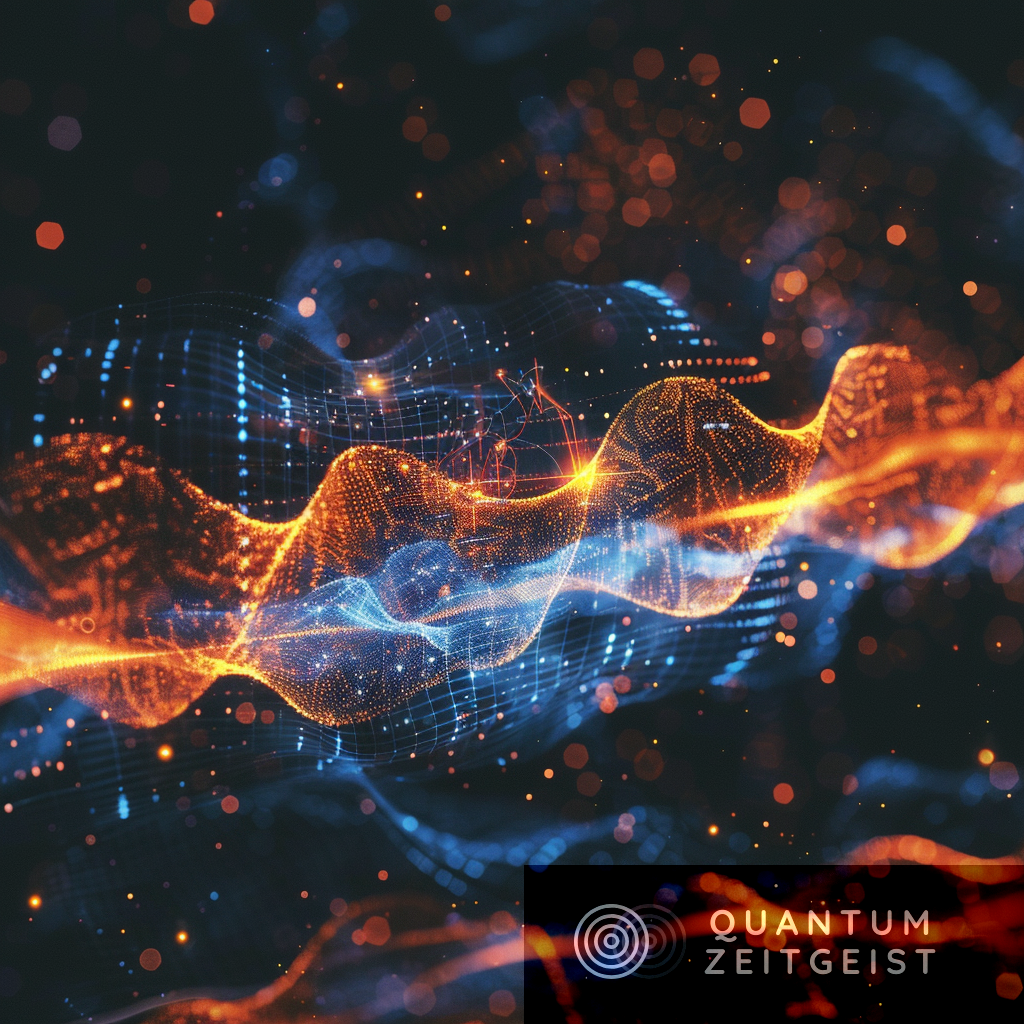The Schrödingerization method, a technique used in quantum computing, transforms nonunitary dynamics into a system under unitary dynamics, making them suitable for quantum simulation. This method can be applied to equations with inhomogeneous terms, which can change the stability of the original system. Researchers from Shanghai Jiao Tong University and the University of Michigan-Shanghai Jiao Tong University Joint Institute have studied the issue of recovering the original variables from the Schrödingerized equations. The Schrödingerization method provides a simple and generic framework to solve general ill-posed problems in a computationally stable way, contributing to the development and application of quantum algorithms.
What is the Schrödingerization Method in Quantum Computing?
The Schrödingerization method is a technique used in quantum computing for the simulation of a general class of nonunitary dynamics with inhomogeneous source terms. This method, introduced in references 26 and 28, transforms any linear ordinary and partial differential equations with nonunitary dynamics into a system under unitary dynamics. This is achieved through a warped phase transition that maps the equations into a higher dimension, making them suitable for quantum simulation.
The Schrödingerization technique can also be applied to equations with inhomogeneous terms. These terms model source or forcing terms, boundary and interface conditions, and discrete dynamical systems such as iterative methods in numerical linear algebra. However, the presence of inhomogeneous terms can change the stability of the original system, presenting a challenge.
In this paper, the authors, Shi Jin, Nana Liu, and Chuwen Ma, from the School of Mathematical Sciences and the Institute of Natural Sciences at Shanghai Jiao Tong University, and the University of Michigan-Shanghai Jiao Tong University Joint Institute, systematically study both theoretically and numerically the issue of recovering the original variables from the Schrödingerized equations, even when the evolution operator contains unstable modes.
How Does the Schrödingerization Method Overcome the Limitations of Classical Computing?
Quantum computing is considered a promising candidate to overcome many limitations of classical computing, one of which is the curse of dimensionality. It has been shown that quantum computers could potentially outperform the most powerful classical computers with polynomial or even exponential speedup for certain types of problems.
The authors concentrate on the general linear dynamical system, which includes ordinary differential equations (ODEs) and partial differential equations (PDEs) for continuous representation, as well as spatially discrete versions. Classical algorithms become inefficient or even prohibitively expensive due to large dimension n, whereas quantum methods can possibly significantly speed up the computation. Therefore, the design for quantum simulation algorithms for solving general dynamical systems, including both ODEs and PDEs, is important for a wide range of applications, for example, molecular dynamics simulations and high dimensional and multiscale PDEs.
How Does the Schrödingerization Method Handle Nonunitary Dynamics?
The development of quantum algorithms excel in unitary dynamics, which is also known as the Hamiltonian simulation. However, most dynamical systems in applications involve nonunitary dynamics, which make them unsuitable for quantum simulation. A very recent proposal for such problems is based on Schrödingerization, which converts nonunitary dynamics to systems of Schrödinger type equations with unitary dynamics by a warped phase transformation that maps the system to one higher dimension.
The original variable u can be recovered via integration or pointwise evaluation of the variable in the extra dimensional space. This technique can be applied in both qubits and continuous-variable frameworks, the latter suitable for analog quantum computing. The method can also be extended to solve open quantum systems in a bounded domain with artificial boundary conditions, physical and interface conditions, and even discrete dynamical systems such as iterative methods in numerical linear algebra.
What are the Challenges and Solutions in Applying the Schrödingerization Method?
For non-Hermitian Ht, the Schrödingerization first decomposes it into the Hermitian and anti-Hermitian parts. A basic assumption for the application of the Schrödingerization technique is that the eigenvalues of H1 need to be negative. This corresponds to the stability of the solution to the original system. When there is an inhomogeneous term bt, one needs to enlarge the system so as to deal with just a homogeneous system. However, the new H1 corresponding to the enlarged system will have positive eigenvalues, violating the basic assumption of the Schrödingerization method.
The authors address this important issue in the paper. They show that even if some of the eigenvalues of H1 are positive, the Schrödingerization method can still be applied. However, in this case, one needs to be more careful when recovering the original variable u. Specifically, one can still obtain u by using an appropriate domain in the new extended space, which is not distorted by spurious right-moving waves generated by the positive eigenvalues of H1.
What are the Implications of the Schrödingerization Method in Quantum Computing?
The Schrödingerization method provides a simple and generic framework to solve general ill-posed problems in a computationally stable way. The authors analyze and compare both the discrete and continuous Fourier transforms used in the extended dimension and derive corresponding error estimates, which allows one to use the more appropriate transform for specific equations.
They also provide a smoother initialization for the Schrödingerized system to gain higher order accuracy in the extended space. They homogenize the inhomogeneous terms with a stretch transformation, making it easier to recover the original variable. This recovering technique also provides a simple and generic framework to solve general ill-posed problems in a computationally stable way. The findings of this paper contribute to the ongoing development and application of quantum algorithms in various fields.
Publication details: “On Schrodingerization based quantum algorithms for linear dynamical
systems with inhomogeneous terms”
Publication Date: 2024-02-22
Authors: Shi Jin, Na Liu and Chi Ma
Source: arXiv (Cornell University)
DOI: https://doi.org/10.48550/arxiv.2402.14696

